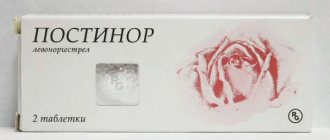Cystitis is an inflammatory disease that affects the bladder and is accompanied by frequent painful urination. Patients often note the presence of small blood clots in the urine itself and its coloration red or brown. Cystitis with blood indicates serious damage to the vascular system of the organ, which is often caused by tumor processes. But there is no need to panic in advance. To make an accurate diagnosis, a thorough examination will be required, not only visual, but also instrumental.
Symptoms of cystitis in men and women
The disease is identified due to many reasons - this is a violation of hygiene rules, hypothermia, a consequence of infection, and even wearing poor-quality underwear. During menopause, cystitis makes itself felt due to poor circulation, deterioration of muscle tone and disruption of the vaginal microflora.
It is almost impossible to miss the development of this disease. Its course is associated with a pronounced pain syndrome, which manifests itself during urination. Often, bloody inclusions or clots appear in the urine.
The main symptoms of cystitis include:
- frequent and difficult urination;
- pain in the lower abdomen and lumbar region;
- alternating fever and chills;
- increase in body temperature up to 38°C;
- bloody urine;
- Cystitis discharge is of different colors, smells and abundance.
Often the symptoms of cystitis appear more clearly at the beginning of the cycle. And then for women during menstruation it hurts to go to the toilet for a little while.
The appearance of one or more of these signs is a reason to immediately consult a doctor.
The disease in question tends to progress from an acute form to a chronic one. Only timely treatment can relieve periodically recurring painful attacks.
When should you go to the doctor if your urine is red?
Beet juice, while coloring urine, does not cause harm.
Both children and adults can eat this vegetable without fear for their health. But if your bladder hurts, your discharge becomes cloudy, and its quantity changes, you need to go to the doctor. If you eat a lot of beets, your urine will be red for more than one day. But there shouldn’t be any pain. Pain and tingling in the abdomen are a sign of illness.
There is an opinion that the coloring pigment is not absorbed by the body in those who suffer from dysbacteriosis or iron deficiency. Is there any way to check this? Only by undergoing a full examination, for which you will have to take blood, stool and urine tests. This can be corrected by changing your diet, but eating other foods without an accurate diagnosis is not the best solution.
You need to see a doctor if you have any discomfort. How long should you endure the pain? Not a single day. Reddened stool or urine is a reason to examine the body. But there is no need to panic in advance; some component of the diet may color the discharge, and as soon as you stop eating it, the problem will disappear.
Beets turn urine pink. This sign does not indicate a disease; only additional symptoms can confirm the presence of a problem. And to establish an accurate diagnosis, it is worth undergoing an examination.
The kidneys are the body's filtering system. During the purification process, remnants of medicinal substances, decay products, toxins and salts unnecessary for the body are isolated from the bloodstream. Subsequently, all the “garbage” is excreted in the urine. The listed list of released substances can change the color and other laboratory parameters of urine.
You should know that the color criteria are also influenced by the colored foods consumed. The most common product that is prone to staining urine is beets. Approximately 60-70% of people noted the appearance of red or pink urine after eating this root vegetable. Natural questions arise: why does urine change color after eating beets? Is it normal when urine takes on its usual shade?
Vaginal discharge
The presence of discharge during cystitis is not the most characteristic phenomenon. Moreover, it is considered a pathology in the normal course of the disease. Most often, the appearance of this symptom is influenced by additional current diseases (infection of the genital organs, damage to the mucous membrane, etc.). To accurately determine their presence, additional examination (tests, smears) is carried out.
It must be remembered that transparent or slightly white odorless discharge is a natural secretion of the genitals. It looks something like this:
Like protein
Transparent
Like snot
You should be wary only when it acquires an uncharacteristic color, smell or consistency.
Other coloring products
Can pomegranate color urine? In addition to beets, there are a large number of products (vegetables, berries, fruits) that can change the color of biological fluid. For example: blueberries, carrots, rhubarb, spinach, pomegranate.
Pomegranate juice and pomegranate seeds contain a significant amount of useful elements, amino acids, and vitamins. In addition, the nuclei also contain coloring pigments, which in some people provoke the appearance of red urine.
There is no clear opinion about the reason for this phenomenon. Perhaps this is a normal reaction of the body, or perhaps it is a manifestation of problems (impaired kidney function). In any case, if the color of the biological fluid changes, or your health is disturbed (even a slight malaise), then the best solution would be to contact a specialist.
The bright root vegetable is very useful. It is recommended for elderly people to improve intestinal function, for children with anemia, and anyone would happily treat themselves to a plate of rich borscht or aromatic vinaigrette. Beets and beet juice are safe. The appearance of red urine after eating such a dish is not a pathology. However, if you feel unwell, discomfort or other pathological symptoms, a preventive visit to the urologist will not hurt.
What does the color of secretion indicate?
Women suffering from cystitis may notice discharge of different colors. You should definitely inform your doctor about this. This sign sometimes plays a decisive role in diagnosis.
For example, white discharge (usually with a cheesy consistency) is characteristic of infections caused by fungi.
The secret for thrush
Purulent - a sign of a serious inflammatory process in the bladder or urinary canal. Often accompanied by an increase in temperature.
Purulent
Green-yellow
Brown discharge with cystitis appears as a result of damage to the urinary tract or due to erosion of the cervix. In these cases, pink or bloody discharge is observed. Any damage to the mucous membrane can lead to the presence of drops of blood in the sexual secretion, which is what gives the characteristic shade.
Spotting
Pinkish slime
With blood
Abundant transparent mucus is another evidence of an inflammatory process in the pelvic organs.
Leucorrhoea
Watery
A yellow or green tint can be caused by sexually transmitted infections (chlamydia, trichomoniasis, etc.).
Yellow
Greens
The most dangerous to a woman’s health is bloody discharge due to cystitis.
With blood stains
Pink
Traces of blood in the urine indicate some complications during the course of the disease (infection entering the kidneys, damage to the bladder, etc.). If you do not pay attention to this symptom and do not start treatment in time, the situation may worsen until the appearance of pyelonephritis.
Find out why frequent urination occurs during menstruation and how the disease is treated by following the link.
Traditional medicine: how to reduce pain with cystitis
The main treatment for cystitis is antibacterial therapy. Sometimes the doctor may recommend that the patient, in addition to medications, resort to alternative treatment for cystitis. As a rule, most often the patient is prescribed to take orally decoctions of medicinal herbs, infusions of leaves of medicinal plants, fruits, berries or flowers.
Remember that the hemorrhagic form of cystitis cannot be treated with folk methods alone, since this disease requires mandatory medical intervention, and therapy is based on antibiotics and antibacterial agents. Traditional methods of treatment will help speed up the healing process and alleviate the symptoms of cystitis. The most effective means to combat the symptoms of cystitis with blood are:
Cranberry - the acid contained in the berries is a powerful natural antiseptic and helps strengthen the walls of the blood vessels of the bladder. In addition, cranberries have a pronounced diuretic effect, which is especially useful for bladder inflammation. For treatment, prepare a fruit drink from berries and drink it throughout the day. This drink is also great for preventing cystitis, as it flushes out bacteria from the bladder and helps strengthen the immune system.
Rowan berries - a decoction of rowan berries is used to treat cystitis. This drink helps reduce inflammation, eases the course of the disease and strengthens the immune system. When drinking a drink made from rowan berries, pain symptoms disappear on the second day. Of course, only in combination with an antibiotic.
Celandine herb - infusion intended for oral administration. Pain and inflammation symptoms decrease the very next day from the start of treatment.
Flaxseed – a teaspoon of flax seeds is brewed with a glass of boiling water and left for 15 minutes. The resulting infusion is in the form of jelly, which perfectly fights inflammation and relieves the painful symptoms of cystitis.
Linden blossom honey - this type of honey is considered the most healing, since linden itself has powerful anti-inflammatory and antibacterial properties.
Traditional methods of treatment are very effective in combination with medications, but before preparing any decoction or infusion from medicinal plants, you must consult your doctor. In advanced forms of hemorrhagic cystitis, traditional treatment methods should be used for a long time.
In the acute period of the disease, the patient is recommended to remain in bed and drink at least 2 liters of fluid per day. Large consumption of water and acidic drinks promotes the rapid removal of pathogenic microorganisms from the bladder with urine.
In combination with antibiotics and folk remedies, hemostatic drugs and vitamin C are mandatory, which help strengthen the walls of blood vessels.
In case of hemorrhagic cystitis, the use of heating pads and other thermal procedures is strictly prohibited. Heat on the lower abdomen and hot baths can provoke severe internal bleeding, which leads to another complication - iron deficiency anemia.
What does the smell of vaginal discharge indicate?
Another sign that will help the doctor in correctly diagnosing your condition is the smell of female sexual secretion. Bacteria, which often cause several ailments at once, tend to create pathogenic microflora in the affected organs, which has a characteristic odor.
- For example, a fishy aroma often indicates the development of dysbiosis in the vagina (gardnerellosis). Gardnerella itself is present on the mucous membrane of every woman in a normal amount, not dangerous to health. In some cases (hormonal imbalances, sudden changes in the acid-base balance, etc.), these microorganisms begin to multiply rapidly, which causes damage.
- An acidic smell is a particular symptom of an infection caused by fungal pathogens (candidiasis). A similar illness usually occurs while taking a number of medications (antibiotics, hormonal agents), which seriously affect the vaginal microflora.
- Foul-smelling vaginal discharge with cystitis is considered a sign of a purulent process. The reason for this is most often sexually transmitted infections.
Any mucus of a pathological nature has a characteristic odor. Such information can significantly simplify and speed up the diagnostic process, and possibly help avoid unnecessary tests.
Ambulance
In any case, a visit to the doctor cannot be avoided, because cystitis can progress, after which, for example, blood may appear. It may indicate various pathologies in women. One of them is cold kidneys. These unusual discharges can occur as a result of severe hypothermia of the legs. This is just one of many reasons, so the doctor must identify the original root and cause of the disease.
There are cases when strange discharge and illness take women by surprise and for some reason they are unable to get to the gynecological clinic (day off, queue at the antenatal clinic, etc.). In this case, if you have cystitis, you can do some procedures yourself.
1. Relieves pain, burning, and discomfort by taking a warm bath. Once any woman tries this method, you simply cannot get her out of there. 2. You can take some medications, for example, Urolesan or its analogue. After several doses of the drug, the discharge may decrease and the pain may also decrease. 3. Drink as much fluid as possible. Despite the fact that women experience painful urination, they need to drink a lot so that the cystitis infection comes out with fluid.
If this disease is left untreated for a long time, complications may occur. Brown discharge or blood may indicate serious illnesses other than cystitis, so you cannot do without consulting a doctor.
Most often, discharge may indicate that there is some kind of infection in the female body. That is why it is advisable for women to get tested for STIs, then the picture will become clearer. An important point is to check your sexual partner. During treatment and for some time after it, it is best to abstain from sexual relations. If you are concerned about discharge due to such a disease, the medical institution will most likely prescribe injections and drops that relieve inflammation of the entire genitourinary system and kidneys.
For all women, it is important not only to dress warmly, but also to be more selective towards your partner, since infections are a very scary thing, which, in addition to cystitis, causes a number of other complications and diseases that can accompany heavy discharge.
USEFUL ARTICLES
Discharge from the urethra in men
Cystitis is a disease more common in women. Despite this, in some cases it is diagnosed in the male half of the population, more often after 45 years.
Often, men who have been diagnosed with this question arise whether there is discharge from the urethra due to cystitis. Since this is a disease of the urinary system, the answer is, of course, affirmative. And if in women it is not always possible to understand exactly where this unusual mucus came from (the vagina and urethra are too close), then in men everything is simpler.
The norm may be discharge that has a transparent color, mucous consistency and a small amount.
You should consult a doctor when the discharge:
- become abundant - this is a sign of inflammation of the urethra;
- are purulent in nature and are accompanied by elevated body temperature - this is a symptom of an inflammatory process in the organs of the genitourinary system;
- become thick and white – fungal infection;
- have acquired a bloody or brown tint - this indicates dangerous damage to the tissues of the urinary canal or bladder.
Each of the described cases carries the risk of certain complications. This should be reported to your doctor immediately so that he can prescribe appropriate tests and, if necessary, additional therapy.
Diagnostic features
If cystitis with hematuria is diagnosed, treatment in women is carried out only after identifying the causes and a thorough examination.
- Blood and urine tests. They allow you to detect inflammatory changes. Bacteriological culture and antibiotic sensitivity testing are also performed. If necessary, PCR and ELISA blood diagnostics are performed.
- Ultrasound of internal organs and urinary system. The study allows you to detect tissue swelling, the presence of homogeneous bodies or stones, clots in the urethra.
- X-ray of the bladder.
- CT or MRI.
- Cystography. This is an invasive technique that allows you to examine the internal surface of the organ. This procedure is used not only for diagnosis, but also for treatment, but it is considered painful. Instruments are inserted through the urethra.
If cystitis with blood is detected in women, the causes are determined first, since simply eliminating the manifestations will not give a long-term effect. It is necessary to differentiate this disease from other pathologies: bladder trauma, tumors, stone formation.
Methods for treating cystitis
Treatment of cystitis, especially in the presence of pathological discharge, is carried out comprehensively. This is preceded by a complete examination of the patient for infections and other ailments that may affect the success of therapy.
The course of treatment necessarily includes:
- medications to get rid of the infection that became the direct cause of the development of cystitis;
- medicines to restore microflora;
- mandatory observance of personal hygiene rules.
If the cause of the disease is sexually transmitted infections, therapy becomes mandatory for both partners. As a rule, the full course is about three weeks, depending on the causes, degree, form and other individual characteristics. The occurrence of any uncharacteristic symptoms or complications should be reported to the doctor immediately so that treatment can be adjusted.
Recommendations
For greater effectiveness of therapy, it is recommended to follow the following rules:
- Avoid hypothermia of the body, for women in particular - hypothermia of the genital organs.
- Hold off on sexual activity.
- Do not eat fatty foods.
If you follow all the rules determined by your doctor and take prescribed medications, you can completely cure cystitis in a short time. Otherwise, there is a possibility of the disease progressing to the chronic stage. Only timely seeking help will help relieve all unpleasant symptoms and avoid the development of complications.
Reasons for changes
Table beet or beetroot (burak) has been used in cooking for a very long time. In popularity, the bright root vegetable is second only to potatoes. Beetroot is an essential component of borscht; it is added to vinaigrette and salads are prepared from beets. Dishes from beetroot are included in weight loss diets and medical treatment tables.
The vegetable contains a huge amount of useful and essential substances:
- Iodine.
- Iron.
- Potassium.
- Calcium.
- Magnesium.
- Phosphorus.
- Zinc.
- B vitamins.
- High fiber content, which helps cleanse the intestines and normalize stomach function.
The bright color of beets is due to the high content of bioflavonoids called betacyanins. Moreover, the greater the amount of them contained in the root vegetable, the more saturated its color will be, which means the higher the likelihood of staining urine after eating beets.
As already mentioned, staining of urine after eating beets is not observed in everyone, but in approximately 60-70% of cases. The very fact that urine is stained is absolutely normal and depends on several factors.
Root variety. Different varieties of beets do not contain the same amount of betacyanins. Thus, the “Shar” variety contains up to 195 mg of bioflavonoids per 100 g of product, which gives the root vegetable its rich color. After eating this type of beet, the color of your urine is almost 100% likely to turn pink or red. The fact is that such an amount of dye simply does not have time to be absorbed in the digestive tract, which means it is filtered by the kidneys and excreted in the urine.
Cooking method. The most destructive effect on the dyes contained in beets is cooking and long boiling. Therefore, boiled root vegetables have much less effect on the final color of urine. At the same time, stewing or baking preserves not only the maximum amount of useful trace elements, but also betacyanins. Accordingly, eating baked beets (for example, adding them to a vinaigrette) contributes to the coloration of urine.
Compliance with product safety measures. Improper storage of root vegetables leads to oxidation and subsequent breakdown of betacyanins. Therefore, if beets are exposed to direct sunlight for a long time, the coloring ability of the juice is significantly reduced.
The amount of root vegetables consumed and the ratio of liquid consumed. A small amount of beets eaten is not capable of turning urine into a different color, since the coloring substances have time to be absorbed during the digestion process. However, you should know that reducing the volume of fluid you drink contributes to the concentration of urine.
Therefore, if there is a restriction in drinking, then in combination with slight dehydration, which in itself leads to darkening of the urine, the coloring pigments of beets can color the urine pale pink.
In the case when beets make up the majority of the dish (for example, beet salad), the digestive system is not able to fully break down the dyes, so in this case, even a full drinking regime leads to a change in the color of the urine.
Level of acidity of gastric juice. As you know, acids can preserve the color of products. Approximately the same effect is observed with increased acidity of gastric juice. Beets, when placed in such an environment, are digested, but betacyanins are not broken down. As a result, the urine becomes red, sometimes very rich.
The intensity of urine color depends on these same factors.
In general, several typical shades can be distinguished:
- Rich red urine.
- Orange tint (most often after eating red carrots).
- Pale pink color.
- Brick red urine.
It is important to know that a change in the color of urine after eating beets or dishes with the addition of brightly colored root vegetables is absolutely normal. You should also take into account the fact that feces can acquire a reddish tint.
Effect duration
Beets do not provide long-term coloring effects. Urine acquires a normal, light yellow tint two days after eating the root vegetable. If this does not happen, you need to listen to your own body. Red urine may be preceded/accompanied by the following symptoms:
- Increased body temperature.
- Burning, cutting, pain when urinating.
- Drawing, stitching pain in the back.
- Feeling of heaviness in the lower abdomen.
- Frequent urge to urinate.
- Discharge of urine drop by drop.
- Rare urge to eat small things.
Similar symptoms are inherent in diseases of the genitourinary tract, both in children and adults.









